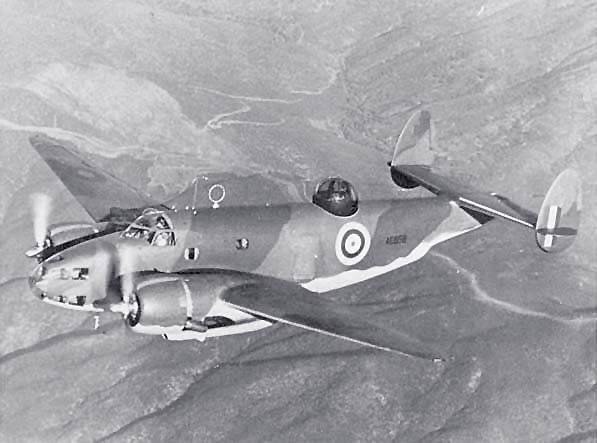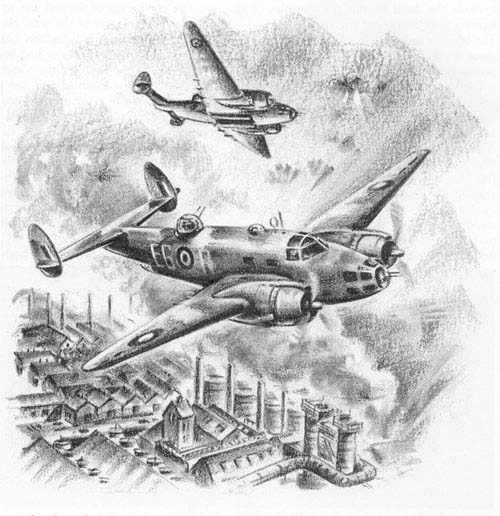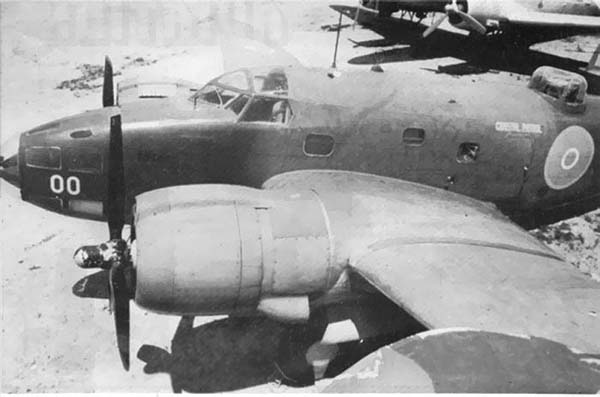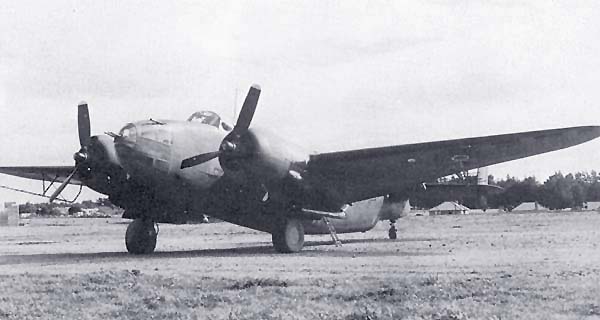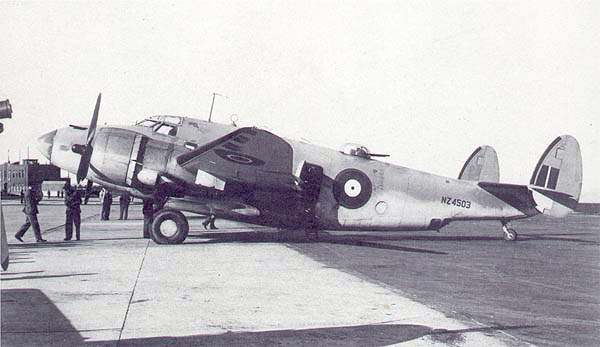|
In 1939 the British Purchasing
Commission requested Lockheed for a replacement for the Hudson maritime
patrol aircraft (based on the smaller Lockheed model 14) which were reaching
the end of their useful service life. The resulting aircraft was the Ventura,
a redesign based on Lockheed's commercial model 18 Lodestar.
These powerful engines, allied to the small wing area and the partial shielding of the elevators by the efficient fowler flaps, led to some handling problems for both experienced and inexperienced pilots which were to follow this aircraft throughout it's service career (During one period in August 1944, this led to the grounding of all RNZAF Venturas after a spate of accidents due to engine failures and handling problems at low level ). These poor single engine flying characteristics were found to be a large factor in most crashes, so training of all pilots for single engine flying of this aircraft was stepped up, and increased serviceability of the engines was worked at by the servicing units. Operational flying was resumed some days later. The initial orders of Venturas arrived in the U.K. in mid 1942, and due to shortages of aircraft, were to be used in the medium bomber role instead of the maritime patrol work for which they had been designed. This is where New Zealanders had their first introduction to the aircraft when 487 (NZ) Squadron received Ventura 1 aircraft for use in the low level-bombing role. Their first operational strike
was on the Phillips factory at Eindhoven in Holland in conjunction with
21 Squadron RAF, and 464 Squadron (RAAF). This attack took place on the
6th of December, and 16 of 487's aircraft took part in the final wave of
the mission. Three aircraft of 487 failed to return.
After several months of missions to targets along the coast of occupied Europe, 487 took part in it's most tragic mission, an attack on a power station in Amsterdam on the 3rd of May 1943 as part of a diversionary raid. Due to the early and high level arrival over the target of the escorting fighters, the German defenses were alerted, and over 70 fighters struck at the 11 aircraft approaching the target, shooting them down one by one. Only one managed to reach the target, that of Squadron Leader L.H. Trent who scored a near miss causing some blast damage, but was shot down as he left the target. The aircraft disintegrated in the air, throwing Trent and his navigator clear. They survived to become prisoners of war. For his actions on this raid, Trent was awarded the Victoria Cross. Few of the other crews (mostly RNZAF) survived. In June, after further coastal raids, 487 were withdrawn from operations, and began converting to Mosquito's and operations in a night intruder role. This ended the first New Zealand connection with the Ventura. After an initial order of 188 Venturas for the R.A.F, several design changes were made, including the more powerful -31 version of the R-2800. 300 of this variant were ordered as Ventura 11 's, but due to the failure in the low-level role of the previous models, these were used in a general reconnaissance and training role. The U.S.Army Air force had requisitioned 208 machines from the Vega production lines in 1941, and these were designated as B-37 models (Lockheed model 37) as they had not been manufactured to USAAF specs. These were used mainly for training. A further batch of 200, designed to USAAF specifications as the B-34, replaced the forward mounted .30 calibre Brownings with .50 calibre's, and the Boulton Paul turret of the RAF machines was replaced by the twin .50 calibre Martin turret. Later an R prefix (denoting a restricted /obsolete status) was added. The RB-34 was used for Coastal patrol work, and bomber and navigation training. In November 1942, the U.S.Navy
had taken over coastal patrols from the Army, and an order was placed with
Vega for a Navy version of the Ventura. Known as the PV-1 (P-Patrol, V-Vega),
this differed from the RAF and USAAF versions in having two under wing
stations for either 1.000lb bombs or 165 US gallon drop tanks, and the
installation of the advanced A.S.V. radar mounted in the nose under an
opaque plastic nose cap instead of the bomber nose glazing (similar to
that of the earlier Hudson) used on the previous versions. Increased fuel
capacity for long patrols was fitted internally, and two special tanks
were designed to fit in the bomb bay, one of 280 gallons in the rear, and
one of 200 gallons forwards.
The second New Zealand connection
with the Ventura began in late 1942 when the RNZAF was allocated RB-34s
and PV-1 s under lend lease arrangements for use in the Pacific war.
RB-34 The first arrivals were by
sea in June 1943, 19 RB-34s in a badly dilapidated state, with vital equipment
either missing, broken, or out of adjustment. By a process of cannibalisation,
six aircraft were brought up to a flyable standard, and dispatched to Fiji
for 3 (Bomber Reconnaissance) Squadron.
By October, all these aircraft
had been sent back to New Zealand due to their poor condition, 3 Squadron
having elected to stick with their tried and true Hudson's!
On June 26th, 1943, the first
of the PV-1s (NZ4505) arrived at Whenuapai after a ferry flight from Hawaii
where the new Venturas were checked out by an RNZAF technical team based
at Kanhoe Naval Airstation.
By August, 1 (Bomber Reconnaissance) Squadron had exchanged its Hudson's for 18 of the new Venturas. |
